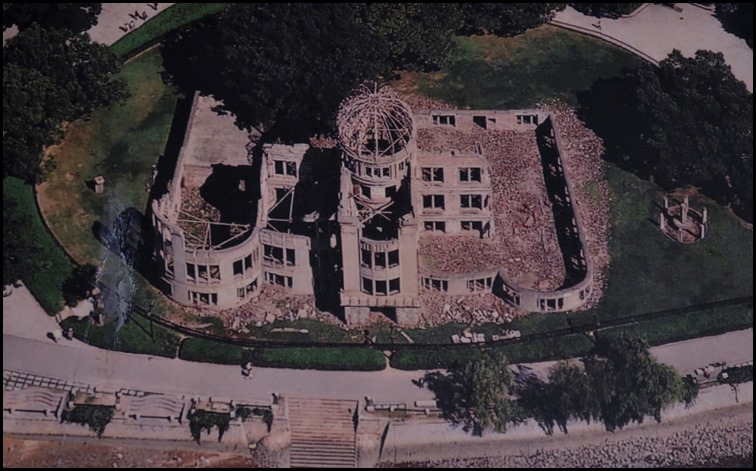A-Bomb Dome

Beez Neez now Chy Whella
Big Bear and Pepe Millard
Mon 6 Nov 2017 23:37
|
The Hiroshima
Prefectural Industrial Promotion Hall - now known simply as the A-Bomb Dome
 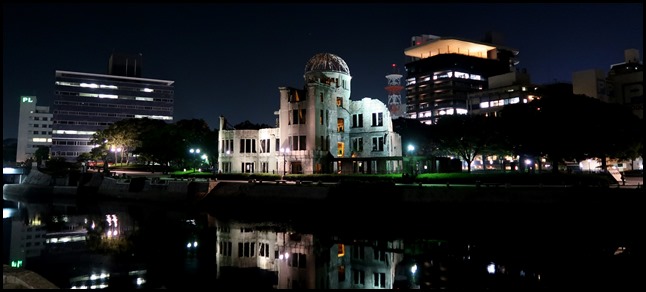 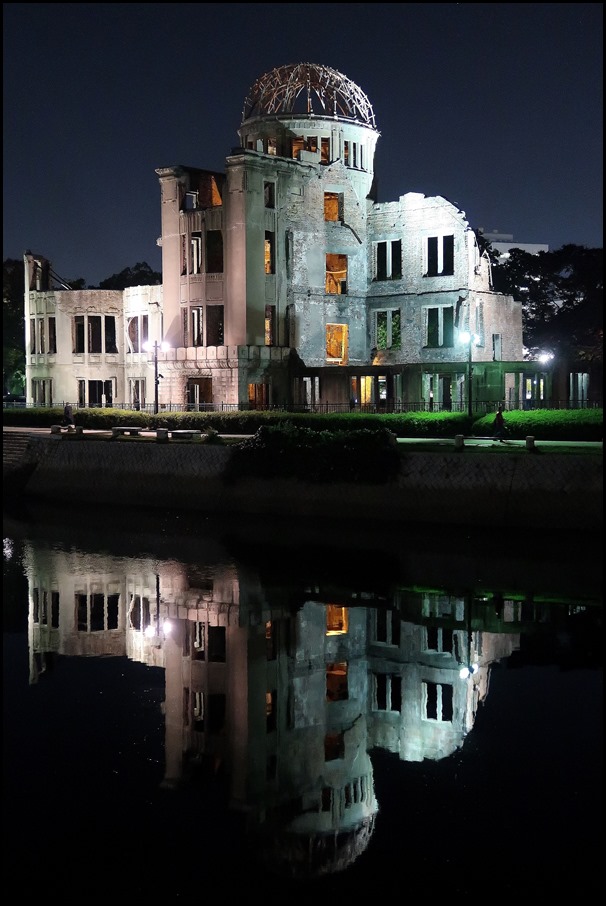 After settling into our digs we set
off as darkness fell to experience the Peace Park but especially to take
pictures of the A-Bomb Dome from many angles. This
was the first photograph as we crossed the bridge in front of our hotel. The
first information board was on the left hand side of the river half way along
(as always typed out in italics). The next was just after we crossed
the bridge at the other end of this picture, and three together as we walked by
on the other side. We faithfully read each information board, even if it had
‘repetition’ – a word that strikes horror if an atom bomb were to ever be used
again.
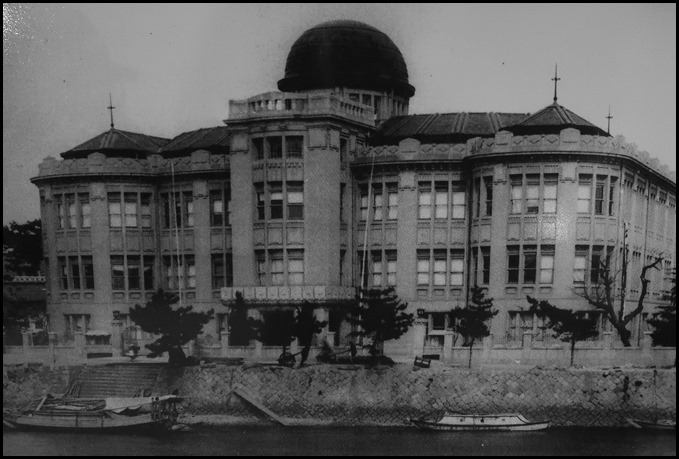 The Hiroshima
Prefectural Industrial Promotion Hall was completed in April 1915 under
the design and supervision of Czech architect Jan Letzel, capturing the fancy of
the citizens of Hiroshima with its characteristic green dome. The atomic bomb
exploded at an altitude of 600 metres approximately 160 metres southeast of the
Industrial Promotion Hall, instantly killing everyone inside the building which
was seriously damaged and completely burned out. In December 1996 this structure
was added to the UNESCO World Heritage List as a reminder to the entire world of
the horrors of the atomic bomb and symbol of global peace.
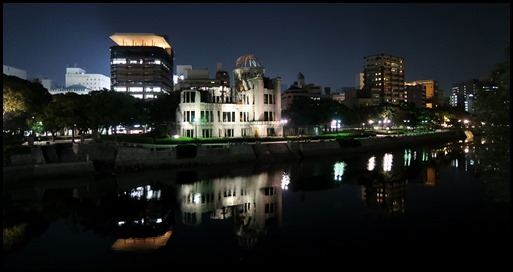 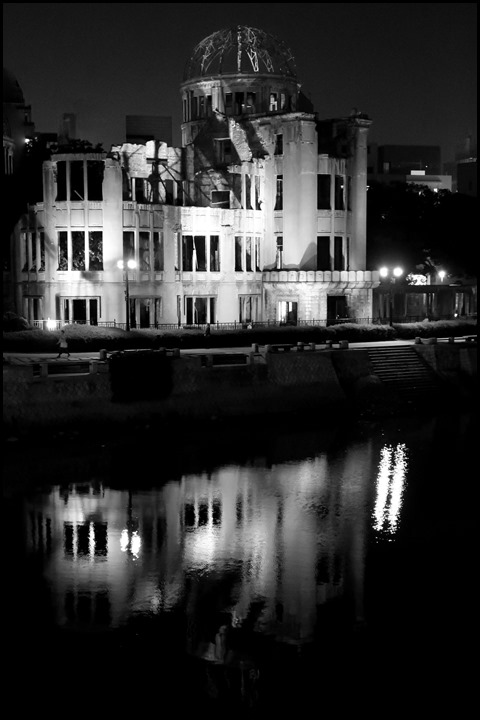 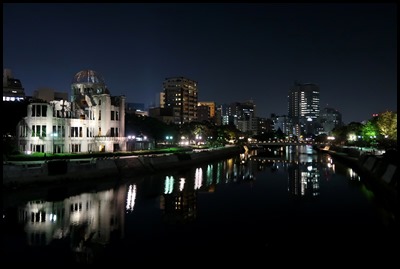 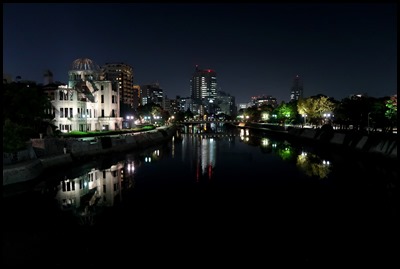 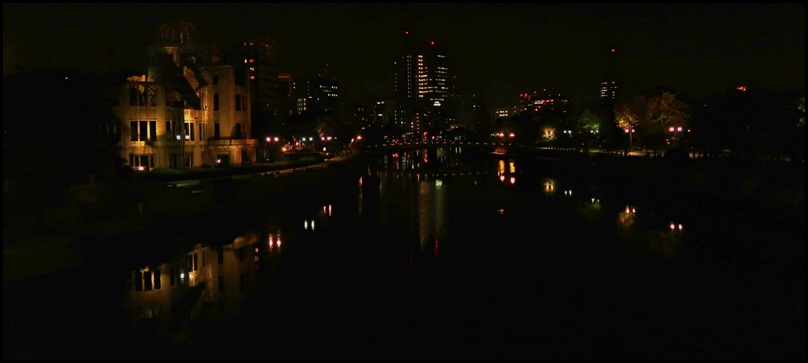  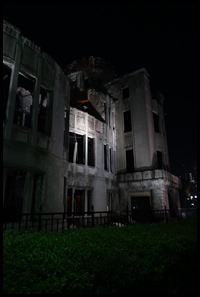 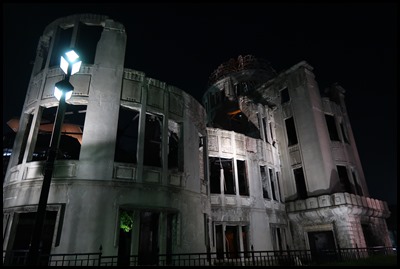 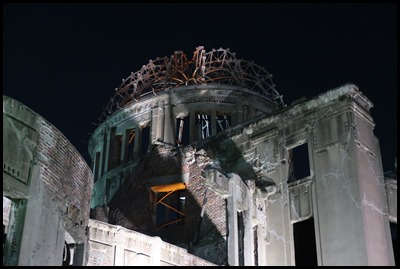  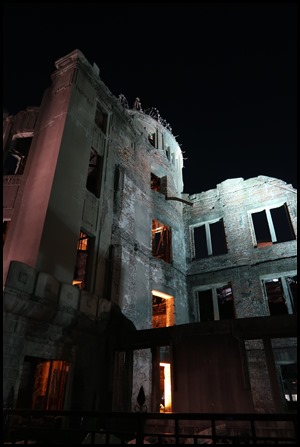 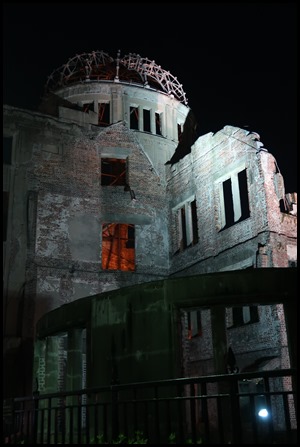 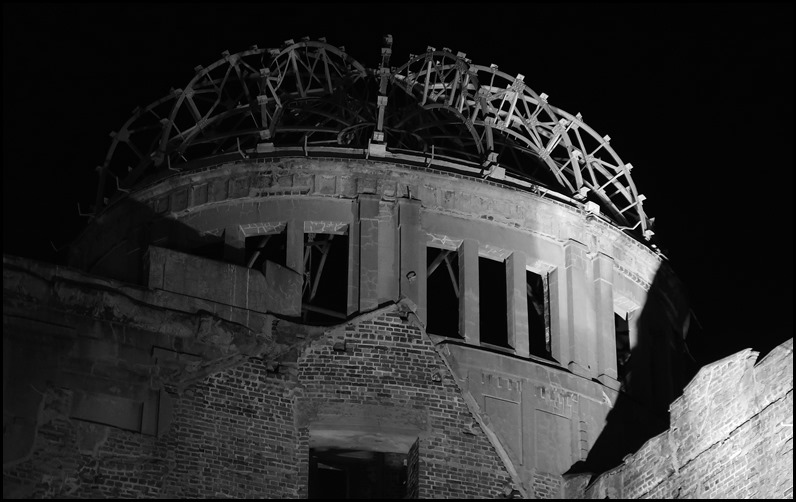 The building now
known as the A-bomb Dome was designed by Czech architect Jan Letzel. Completed
in April 1915, the Hiroshima Prefectural Commercial Exhibition Hall soon became
a beloved Hiroshima landmark with its distinctive green dome.
While its business
functions included commercial research and consulting services and the display
and sale of prefectural products, the hall was also used for art exhibitions,
fairs, and cultural events.
Through the
years, it took on new functions and was renamed the
Hiroshima Prefectural Products Exhibition Hal. As the war intensified, however,
the hall was taken over by the Chugoku-Shikoku Public Works Office of the
Interior Ministry, the Hiroshima District Lumber Control Corporation and other
government agencies.
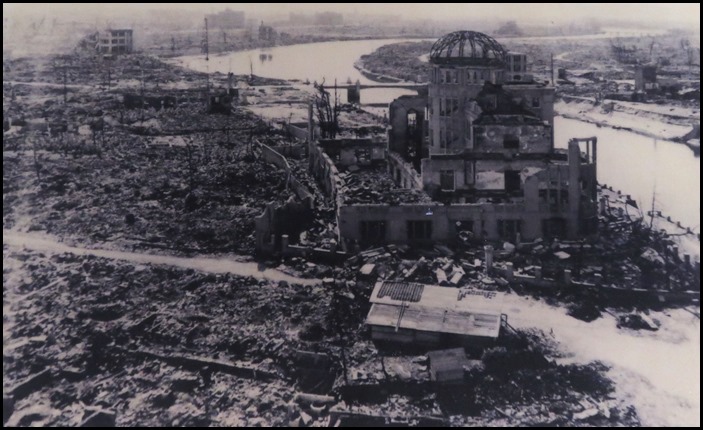 At 08:15 a.m., on the 6th of August 1945 an American
B29 bomber carried the world’s first atomic bombing. The bomb exploded
approximately 600 metres above and 160 metres southeast of the Hiroshima
Prefectural Industrial Promotion Hall, ripping through and igniting the
building, instantly killing everyone in it.
Because the blast struck almost directly above, some
of the centre walls remained standing, leaving enough of the building and iron
frame to be recognisable as a dome.
After the war, these dramatic remains came to be
known as the A-bomb Dome.
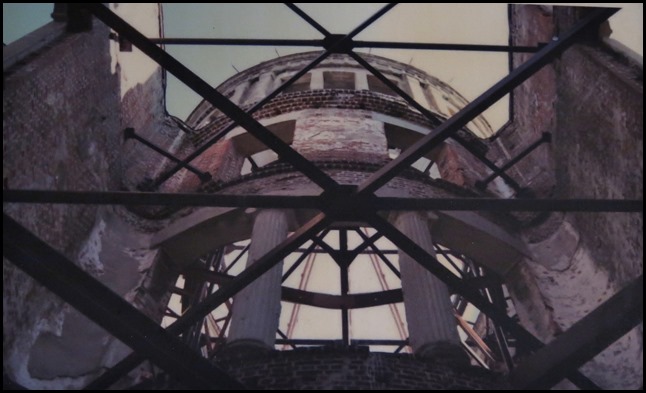 For
many years, public opinions about the dome remained divided. Some felt it should
be preserved as a memorial to the bombing, while other thought it should be
destroyed as a dangerously dilapidated structure evoking painful
memories.
As
the city was rebuilt and other A-bombed buildings vanished, the voices calling
for preservation gathered strength. In 1996, the Hiroshima City Council passed a
resolution to preserve the A-bomb Dome, which led to a public fundraising
campaign to finance the construction work. Donations poured in with wishes for
peace from around Japan and overseas, making the first preservation project
possible in 1967.
Several preservation projects have since been carried out to ensure
that the dome will always look as it did immediately after the
bombing.
In
December 1996, the A-bomb Dome was registered on the World Heritage List as a
historical witness conveying the horror of the first use of a nuclear weapon,
and as a world peace monument appealing continually for lasting peace and the
abolition of such weapons.
To
help protect the dome, the national government designated the area around it as
a historic site under the Cultural Properties Protection Act, with a larger area
in and around Peace Memorial Park set aside as a buffer
zone.
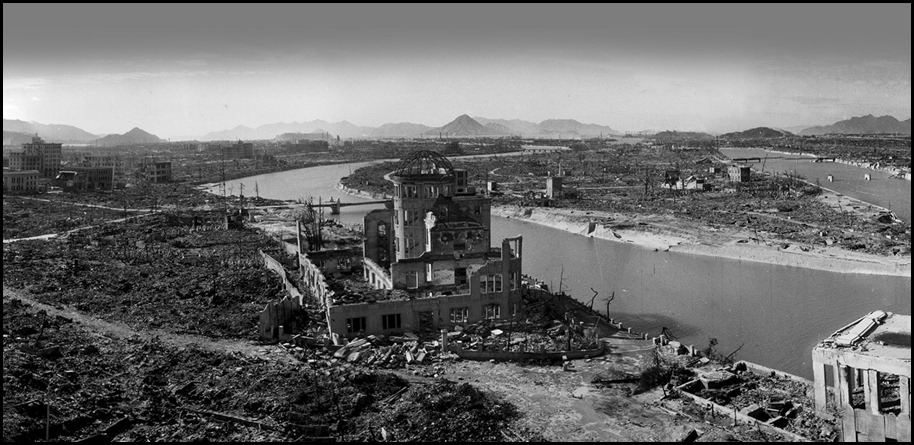  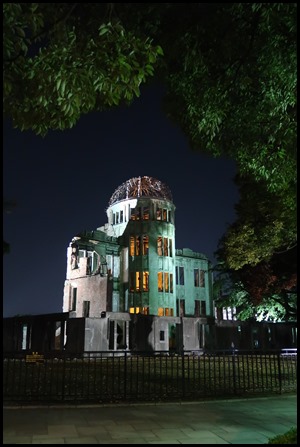   ALL IN ALL VERY HAUNTING BUT
DIGNIFIED
VERY MOVING WITH A SERENE
PEACE |
